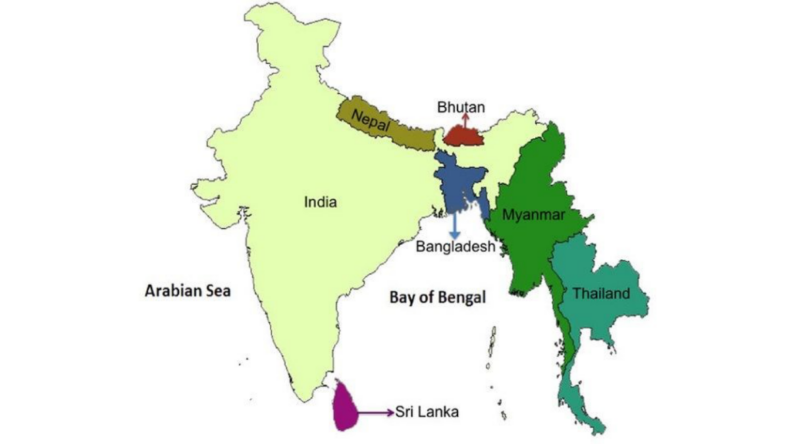Ministry of External Affairs (MEA) Is In Constant Touch with Leaders and Offices of These Countries for Conformation of their Availability.
India is looking forward to inviting leaders/representatives of the Bay of Bengal Initiative for Multisectoral Technical and Economic Co-op (BIMSTEC) countries on the occasion of the 72nd Republic Day Parade. BIMSTEC leaders attended the oath-taking ceremony of Prime Minister (PM) Narendra Modi in 2019, but the power equation in BIMSTEC countries like Myanmar, Nepal, Sri Lanka have changed since then. The Guestlist of Republic Day is announced after confirmation is received from respective countries.
As per the protocol, a letter of invitation goes only after the availability of foreign dignitaries is confirmed. Invitation for Republic Day holds immense significance, and strategic, diplomatic, commercial considerations influence Delhi’s choice of guests.
Delhi’s is expecting the presence of Sheikh Hasina (PM of Bangladesh), Sher Bahadur Debra (PM of Nepal), Mahinda Rajapaksa (PM of Sri Lanka), Lotay Tshering (PM of Bhutan), Min Aung Hlaing (Military leader of Myanmar), Pryaut Chan o cha (PM of Thailand). This will be the first time for Indian leaders to engage with Min Hlaing, who seized power in February this year. In 2019, Sri Lanka, Nepal also had different leaders.
Founded in 1997 through Bangkok Declaration, it initially had India, Bangladesh, Sri Lanka, and Thailand as its members. Later Myanmar, Nepal, and Bhutan joined, making BIMSTEC. Member countries host 22% of the world population, $ 2.7 trillion of combined GDP. The Secretariat of BIMSTEC is located in Dhaka, Bangladesh.
A vital principle of this regional grouping is to extend co-operation 14 areas like Energy, Fisheries, Disaster management, Transport, Trade and Commerce, Investment, Tourism, Conservation of nature, co-operation against Narcotics/Piracy/Terrorism. BIMSTEC is a crucial regional grouping for India. The co-operation envisaged by the South Asian Association for Regional Co-operation (SAARC) in these areas remained dormant following the Terrorist attack at Uri.
This year some BIMSTEC countries supported Delhi’s bid to boycott the SAARC summit in Islamabad as India accused Pakistan of being involved in the Uri terror attack, since then, India pushed the rejuvenation of BIMSTEC.
BIMSTEC provides an opportunity to engage with South Asian and South-East Asian countries without dealing with Pakistan. India can take advantage of North East Region (NER) to engage with BIMSTEC countries.
The government’s BIMSETC countries cooperate in various projects, For example, India Myanmar Thailand Trilateral highway, Kaladan Multimodal Project (India to Myanmar). Engagement with BIMSTEC countries will also aid development in NER in terms of infrastructure, tourism, investment, increased trade, and commerce.
This year member country finalized the BIMSTEC Charter (Clears Aim, Areas of Co-operation, Roles and Responsibilities), Motor Vehicle Agreement (Facilitate road movement of goods and services), Coastal Shipping Agreement (To promote trade and tourism), Convention to Combat International Terrorism, Organized crimes, Illicit Drug Trafficking, Connectivity Master Plan (Ease physical connectivity among countries).
This grouping faces several challenges. Many members see India as hegemonic power and hesitate to engage with India in the areas mentioned above. Negotiations of the Free Trade Agreement (FTA) have been going on since 2004 without any substantial outcome.
Also, increased Chinese influence in countries like Myanmar, Sri Lanka, Bangladesh is affecting the interests of India. China has invested in ports located in Sri Lanka and Myanmar which can pose a strategic threat to India. Recently Sri Lanka sidelined India from the development of the East Container Terminal at Colombo Port.
The Bay of Bengal, a gateway to the strategic strait of Malacca, has emerged as a critical point for China to show its assertiveness. China wants unimpeded access to Malacca and the Bay of Bengal. China is also using its economic power to influence countries in the region, including BIMSTEC countries.
Under initiatives like the Belt and Road Initiative and String of Pearl, China spreads its legs in BIMSTEC countries (Except India and Bhutan). India needs to enhance co-operation with BIMSTEC countries, enhance people-to-person ties, and pool investment in the region to secure its strategic interests.













